What a Barge Cruise Is—and Why Some Prefer It to a River Cruise
If you have a hard time making sense of the phrase “barge cruise,” don’t feel bad. Luxury barging is such a tiny niche that it is practically unknown even in France, the country where the phenomenon originated. When I told my French friends that I was going on a barge trip (croisière en péniche), they thought I was going to rent the barge and pilot it myself while Patrick—my French husband, a retired safari guide—whipped up gourmet meals in a tiny kitchen. They thought we were going to take turns opening and closing the locks. (This type of DIY cruise, while possible, is not at all what we had in mind.) My American friends heard “barge” and thought “river cruise.” Almost everyone imagined something rustic.
A barge cruise is very different from a river cruise, starting with the size of the boat. A river ship usually carries 160 to 190 passengers, whereas the capacity of most barges is between eight and twelve. It’s like the difference between a 90-room hotel and a B&B. With one you’ve got your own TV and the option of having your own balcony; with the other you’ve got a captain who picks you up at the train station. Barges usually ply canals, not wide rivers—so, instead of cruising alongside highways and industrial areas on much of your route, your waterway is the equivalent of a country road. Another difference is speed. A long-legged person can walk alongside a moving barge without breaking a sweat. This has important implications. If you get tired of cruising, you have only to wait a few minutes for a set of locks, then hop off the boat and explore. You and the boat, which travels only a few miles per day, are never going to lose each other.
Families and groups of friends like barge cruises because they can book the whole boat and customize their shore excursions. Kids like them because there are bicycles, and farm animals, and castles, and a captain who will let you help him pilot the boat.
My first-ever barge trip was aboard the Savoir Vivre, an eight-passenger hotel barge that cruises a section of the Burgundy Canal. The 242-kilometer canal, completed in 1832, takes you deep into the heart of the French wine country, bisecting cow pastures, sheep meadows, woods, fields, and small villages. Starting in the village of Escommes, near Dijon, we cruised a total of 40 miles in six days, passing through 50 locks.
My trip, which took place in mid April, was arranged by Ellen Sack, the barge cruise expert on Wendy’s WOW List of Trusted Travel Experts. My assignment from Wendy: To learn as much as possible about barge travel, through firsthand experience, so that I might enlighten others.
The Boat
When enthusiasts say that barging is an “intimate” form of travel, they are not just talking about the size of the boat, although it all starts with that. Barges are narrow, flat-bottomed vessels originally used to transport cargo; their heyday lasted for about 20 years, until the invention of the railroad. In the 1970s, an enterprising British chap hit on the idea of taking transporter barges and turning them into floating hotels by adding a superstructure. The idea caught on, and a little industry was born. The Savoir Vivre is unusual in that it is a purpose-built hotel barge, not a conversion. Nonetheless, the eight-passenger vessel has to fit through the same locks as all the other barges. Its four cabins are small—Patrick and I took turns getting dressed—and the lounge doubles as a dining room. On the larger of the two observation decks, six is a crowd, but you are welcome to go up to the wheelhouse and hang out with the captain, who has the best view. Our captain, Richard Megret, was an easygoing Frenchman who had been barging for 20 years; he started out as a cook. He was also our bartender, waiter, guide, and chauffeur. When one of us had a birthday, Richard ordered the cake. When the dishwasher broke, he did the dishes by hand; then he fixed the dishwasher. We and the six other passengers spent most of our waking hours with him and Laura, our tour guide, and each other. This is what barge fans mean by “intimate.”
The Scenery
Unlike a river ship, a canal barge chugs along at four miles per hour, pausing every few minutes to pass through a set of locks. The shore is right there: You can practically reach out and touch it. On the Burgundy Canal, you’re a few feet from white cows and flocks of sheep. When you’re standing on the deck you can literally talk to the villagers strolling along the towpath with their fishing poles and picnic baskets and baby carriages. Children walk or ride their bicycles to the canal to watch the boats go by. They cluster on the little bridges that cross the canal. They sidle up to the uniformed men and women who work the locks by hand. At each set of locks is a small house where, up until the 1950s, the lockkeepers and their families lived; now the houses are abandoned or rented out and the lockkeepers zip up and down the canal on motorcycles. Most mornings, I left the boat on foot and walked through the village where we had moored. On these rambles, I might pass a boulangerie, a post office, a school, a church. I never had to cross a highway or wait for a traffic light. Cocks crowed. Cows mooed. Church bells rang. One evening we moored next to a field where a white horse and a red horse grazed. The young girl who came to fetch them called out a greeting. This, too, is what barge fans mean by “intimate.” You are, for a brief time, a part of French village life.
The Daily Routine
Breakfast is served in the lounge at 8:00. The table is laden with local goodies—pastries, cold cuts, cheeses. At 9:30 or 10:00, Laura arrives and you pile into the minivan. She hands out bottled water and peppermints. You drive through vineyards, woods, fields, and small villages to a castle, or a goat farm, or a monastery where, in the Middle Ages, the monks made wine in monstrous wooden presses. After the tour, you go back to the boat for lunch, which, like breakfast, is catered by a fine restaurant. You eat more than you should. Then you nap, or stroll along the towpath, or sit in a deck chair and watch for herons while the barge putters along. At 6:00, Richard opens a bottle of very good Burgundy and sets out bowls of olives and little puffs of choux pastry called gougères. Then you walk or drive to an excellent restaurant and eat too much food again. (This was another difference between our particular barge cruise and typical river cruises: On river cruises all meals are served on the ship, which means you may miss out on tastier, more authentic cuisine you could find in local eateries.)
Land Activities
Alongside the canal is a well-maintained towpath, once used by draft animals. Every set of locks is an opportunity to get off the boat and bicycle or walk along the towpath. When you reach a set of locks and you want to get off the boat, you have only to open a small gate and step onto the berm. This is also what barge enthusiasts mean by “intimate.”
In addition, there are daily shore excursions. Our tours were led by Laura Aplin, a British guide with a particular interest in sociological history—how people lived way back when. At Châteauneuf-en-Auxois, a medieval citadel, we learned what life was like when the castle was under siege. (Days were spent in boredom. Then a dead cow might fly over the wall, catapulted by the attackers in an effort to spread disease among the enemy.) We learned about 15th-century medicine at the Hospices de Beaune, made friends with the goats at a vineyard in Sainte Sabine, and learned how 12th-century Cistercian monks made wine at Clos de Vougeot. The tours generally lasted a couple of hours and involved a little bit of walking but not a lot. They were all fun. I don’t know about you, but I can’t stand reading little signs and wearing earphones when I go through a museum. (On river cruises, as opposed to barge cruises, the group tours ashore are so large that passengers must wear audio headsets in order to hear the guide.) And I will tell you straight out that I fell in love with Laura. Everybody did. We competed to sit next to her in the van.
The Food
An essential feature of barging is the food. It’s supposed to be outstanding, and with one exception—a new restaurant that our captain wanted to try out—it was. On the boat, meals are served family-style. Lunches are hearty: two or three kinds of salad, quiche, plus a main dish (either meat or fish) and a dessert. The Savoir Vivre is unique among hotel barges in that your evening meal is not on the boat but in a local restaurant, often in a gorgeous building that dates back to the days when Burgundy was a dukedom. One evening we walked along the canal and across a great expanse of lawn, past fountains, ponds, and weeping willows, to a former abbey, now a five-star hotel, where the only other guests (it was early in the season) were a couple of Londoners who were on a DIY barge trip to celebrate their upcoming nuptials. What did we eat? I honestly don’t remember, except for the baba au rhum, because the waiter set the bottle of rum on the table next to the dish. I do remember the amuse-bouche and the strawberry soufflé at Chateau Sainte Sabine, both of which were garnished with flecks of gold leaf.
The Bottom Line
Ellen’s daughter Stephanie Sack, a marketing specialist, told me that there are only 75 hotel barges in the world. The majority of them are in France. This is where Ellen first encountered barging in the 1980s, when the phenomenon was in its infancy. She now arranges barge cruises in ten different regions of France, as well as on canals and rivers in seven other European countries. (Such scope and expertise are partly why Ellen has earned the spot of barge travel specialist on Wendy’s WOW List of Trusted Travel Experts; the other reason is the glowing reviews we receive from our readers.)
The Savoir Vivre costs $3,500 per person for six nights, plus a tip of 5 to 10 percent for the crew. Is that a good deal? Let me put it this way: While a DIY cruise is theoretically possible, do you really want to order the food, pilot the boat, moor the boat, load the dishwasher, fix the dishwasher, stock the bar, or even order the croissants? I sure don’t. And how are you going to get to the beautiful castle if you don’t have a minivan, or figure out what you’re looking at when you arrive? I wouldn’t have wanted to do any of our shore excursions without Laura. At Châteauneuf-en-Auxois, in addition to old-time germ warfare (the flying cows), she showed us where the lord of the castle hid his jewels when the tax assessor came (hint: his wife sat on them), and what a fourteenth-century hot-tub party was like. Without her, we would have seen only a chair and a wooden tub.
For $675 per day, minimum, you get, minimum, an all-inclusive laid-back holiday with great food and wine, one that allows you to bicycle through the French countryside and stroll around small villages at your own speed, visit historic sites with an excellent guide, and travel in a small group.
That leaves the question of weather. The Savoir Vivre has one TV, some DVDs, sporadic Wi-Fi, a Scrabble game, but there’s not a lot to do on a barge when it rains. In fact, there’s not a lot to do on a barge, period, besides eat and sleep. Shore excursions make the days pass quickly, but I wouldn’t want to carry a dripping umbrella around Burgundy if I could help it. Barge season in Burgundy runs from April to October. April gets an average of nine days of rain, per regional weather statistics, May gets 13. There are eight umbrellas onboard the Savoir Vivre, just in case. If you want to play it safe, go in July.
To ensure you get the best barge trip possible, reach out to Ellen Sack via Wendy’s trip request form. You’ll be marked as a VIP traveler and get these five benefits.
*Disclosure: Barge Lady Cruises provided our reporter, Sara Tucker, with a six-day barge trip through France, free of charge. In keeping with WendyPerrin.com standard practice, coverage was not guaranteed and remains at our editorial discretion. You can read the signed agreement between WendyPerrin.com and Barge Lady Cruises here.

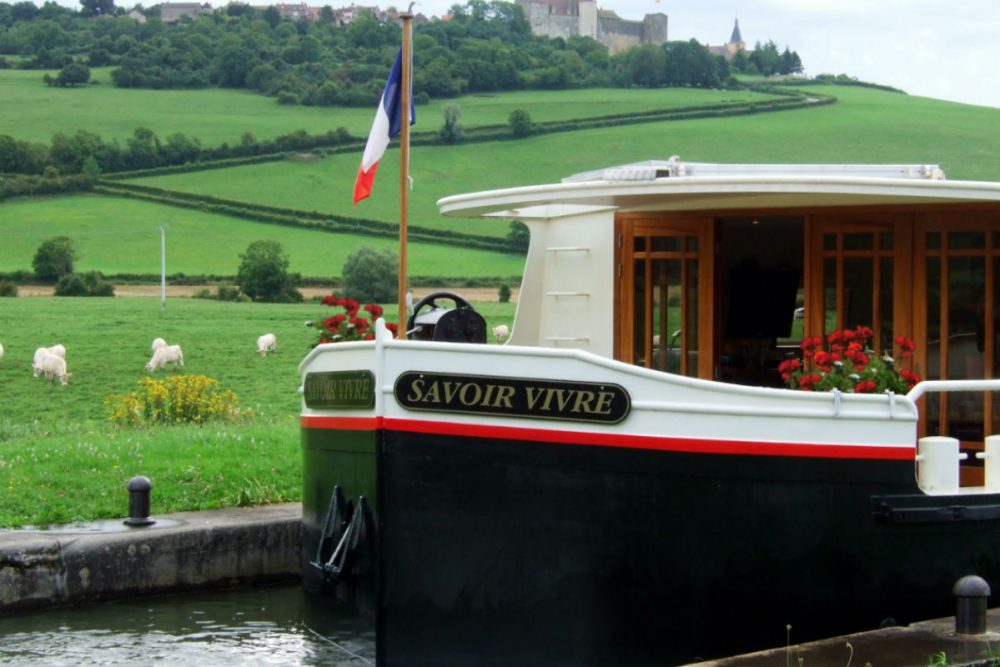

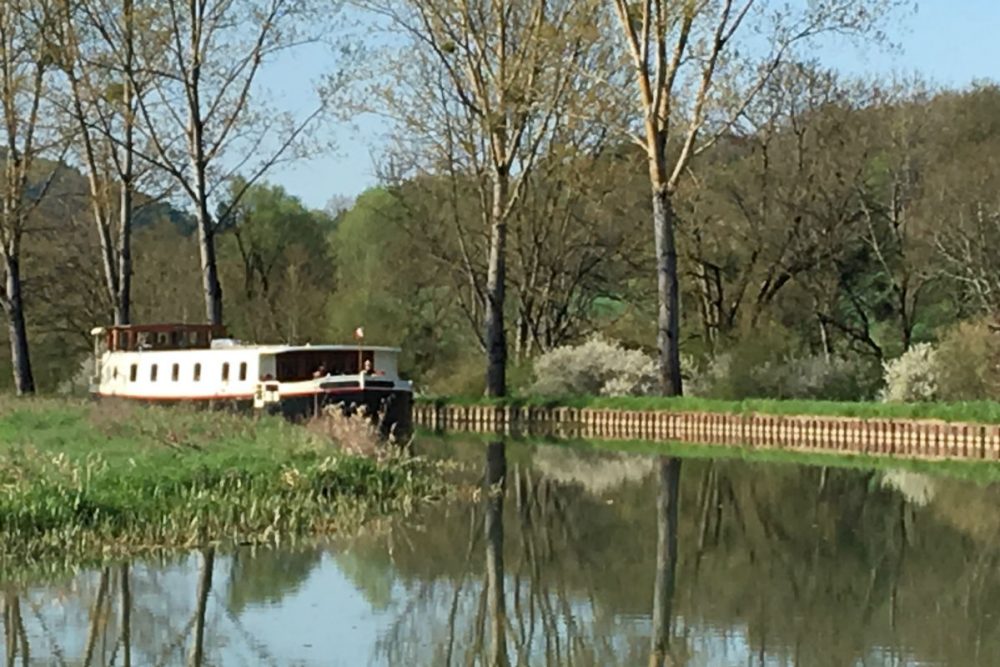

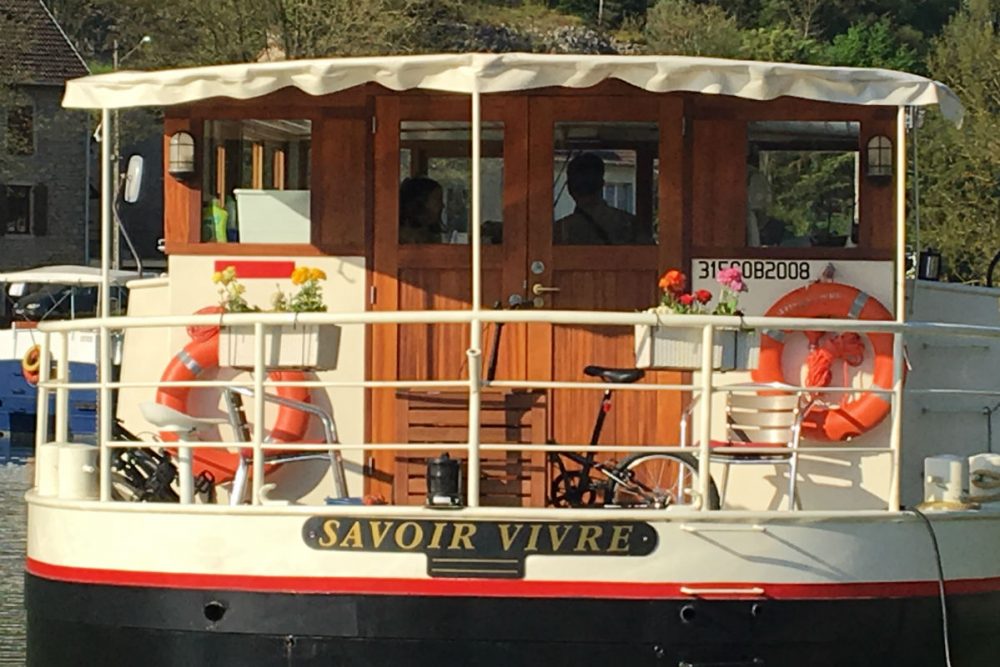


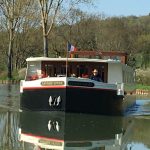
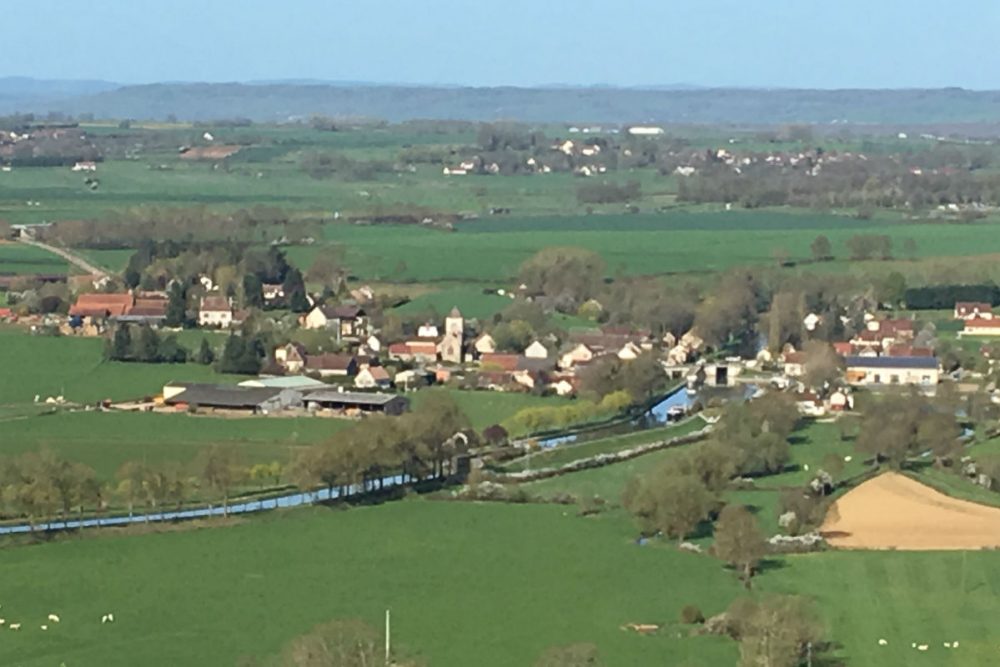
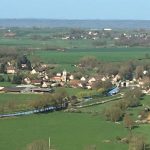
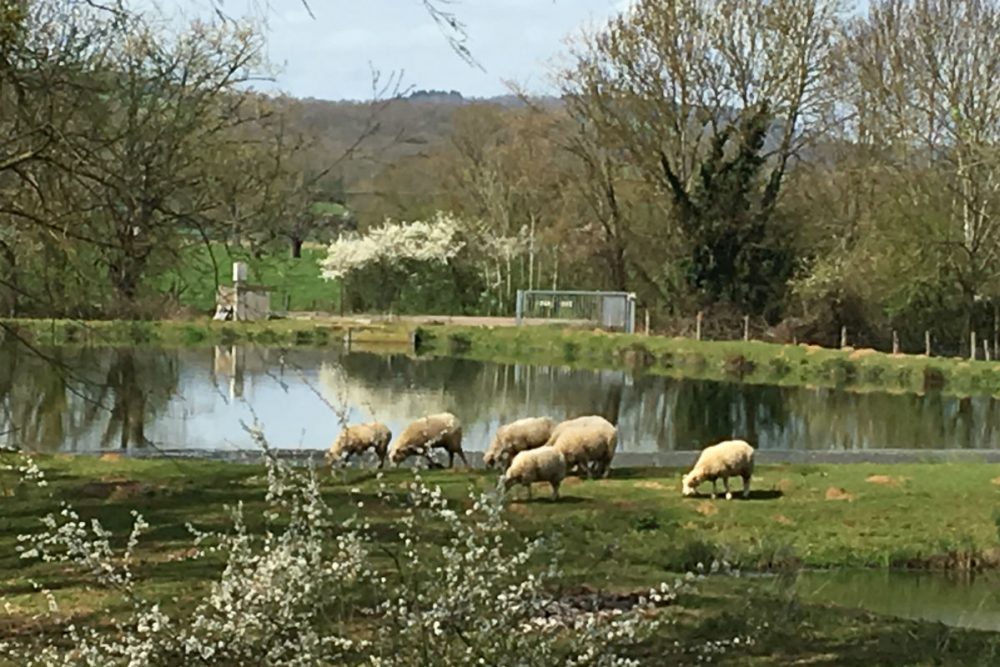

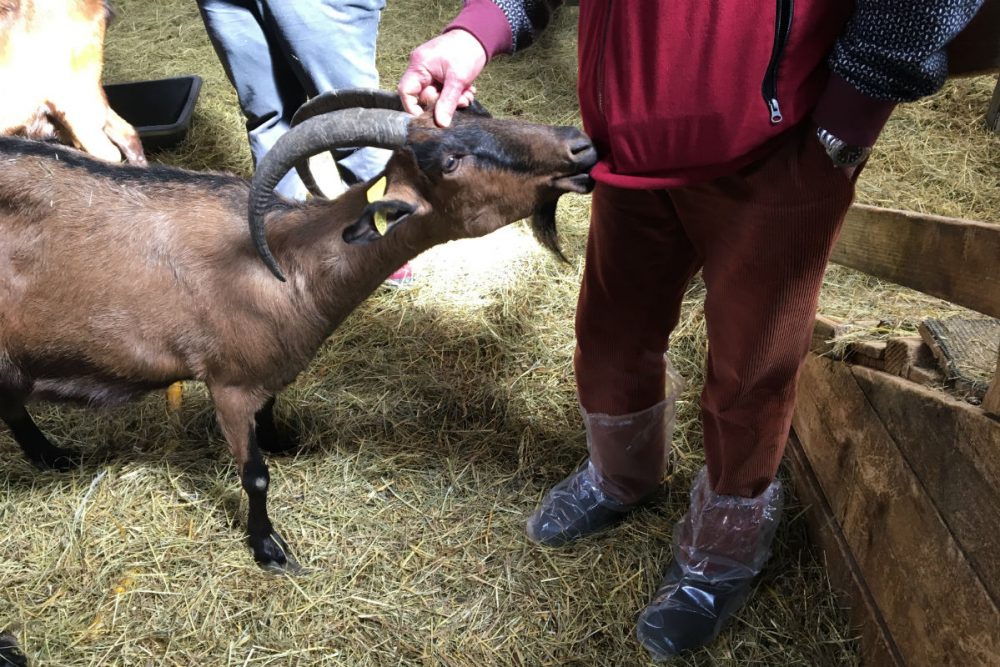
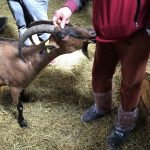

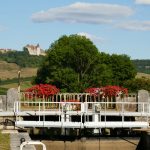






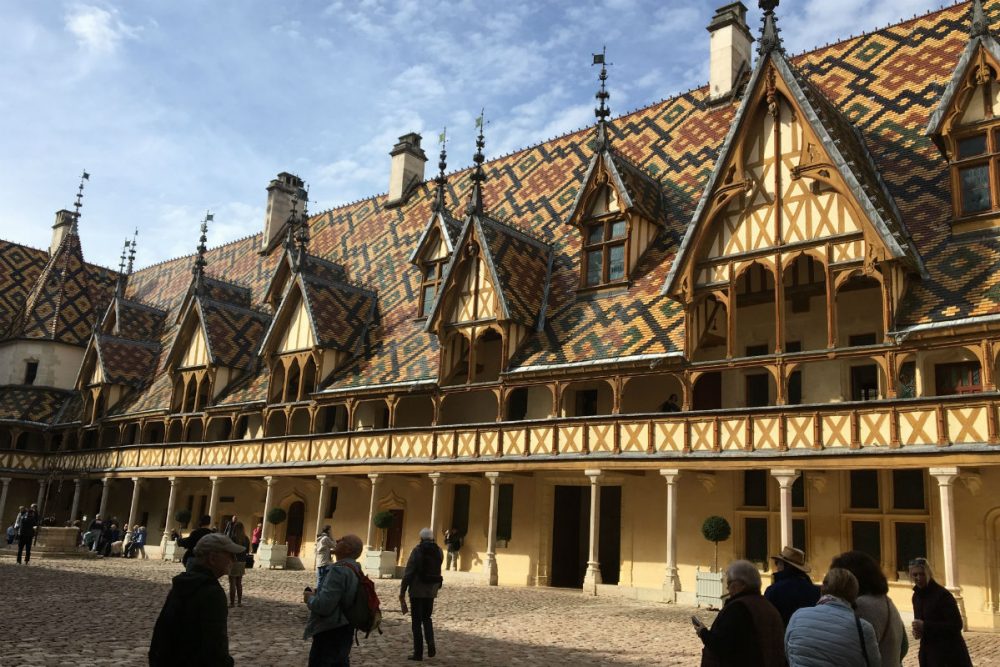





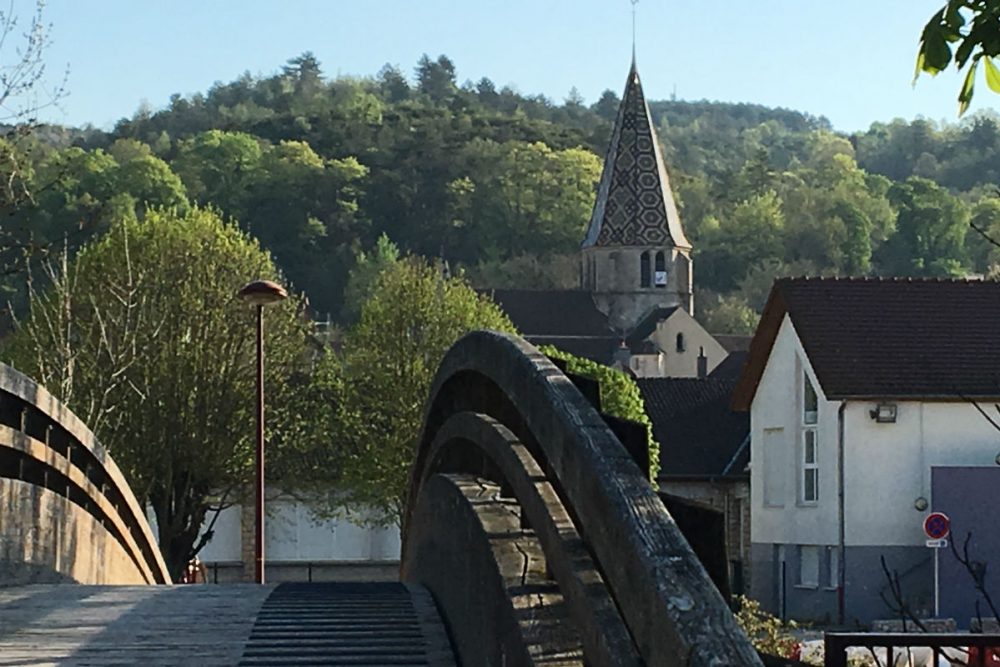




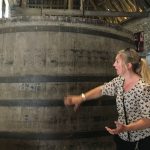

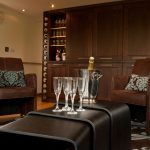

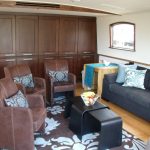

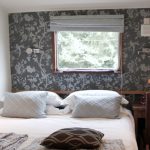


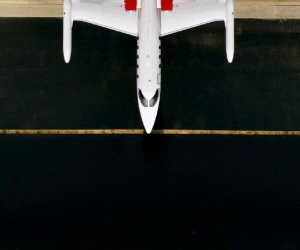






Ed, your trip idea sounds like something my husband and I would like to do but we do not have a group. Are you open to Tagalongs? We fit your description. Thanks!
Hello, a group of 16 – 22 of us are looking to charter a barge and bike cruise in 2020. We are all over 60 years old and all just recreational bikers at best but all very active. For our age. We feel a daily bike ride of anywhere between 15 and 25 miles is appropriate. So far I have checked with the Barge Lady (our group is too large) and an agent that uses CrouseEurope barges. They will get back with me when 2020 schedules are available. Do you have any other suggestions for our group?
Thank you,
Ed Graves
Thanks for the great question. To make sure Wendy sees it, please click over to the Ask Wendy page and submit it via the form there. That way it will go right to her inbox.
Hi Wendy,
We took a barge trip in Burgundy through French Country Waterways on the Horizon II ten years ago. We were a group of 8 celebrating a friend’s birthday and had the barge to ourselves. We found the rooms to be well designed and, while admittedly small, very easy to navigate and quite comfortable. The crew, mostly British, were friendly, accommodating and surprised us on July 4th with a barbecue. How they managed to find the fixings in the miniscule town where we moored eluded us. They even had some fireworks much to the delight of the folks on the other barges moored there. Most of our meals were on board but one was at a Michelin 2 star in one of the towns. The van trips were unique and we were often the only group at a particular site. Obviously, things change in ten years so we can’t evaluate the company’s current service. I just wondered if you had heard of this company. Best, Noni
Hi, While I found the article well-written and informative, there are a few unanswered questions that I have. Are you able to be a single traveler , sharing the boat w/ other travelers, or do you have to rent the whole boat? What would the price be? Also, if you are only 2 people (friends) would you be able to join others? Are the sleeping arrangements such that there would be 2 beds in 1 room?
Thanks for your help,
Donna
Hi Donna,
Yes, you can join a barge cruise as a solo traveler, or as two travelers with the other cabins occupied by people whom you don’t know (but who will be your friends by the end of the week!). And I believe many barges can arrange their cabins to include a queen-size bed or two twins. To find out whether a barge cruise is the right fit for you–and which barge is the best fit–I strongly recommend reaching out to barge travel specialist Ellen Sack via this trip request form: Ellen’s trip request form (click on that link, and scroll down to the questionnaire). That way, you’ll be marked as a VIP traveler and get the five benefits detailed here: How To Get The Best Trip Possible.
Wendy
The barge cruise sounds wonderful. I have some questions:
Can. I get a list of the various cruises, the countries where they travel , and their itineraries? Are the dinners out included in the price? What clothes should I pack? Can you arrange transportation at the end of the cruise if you want to continue your vacation?
Thank you
Hi Marie,
You’ll find barge cruises in France, England, Ireland, Scotland, Holland, and Germany. Dinners out are typically included in the price, and I’d advise packing casual clothing. To find the perfect barge cruise for your particular trip goals and needs, I strongly recommend contacting barge expert Ellen Sack, who is the barge trip specialist on my WOW List of Trusted Travel Experts. The best way to contact her is via my trip request form for her: Ellen’s trip request form (click on that link, scroll down, answer the questions, and submit). That way, you’ll get the VIP treatment that comes with being a WendyPerrin.com reader, and you’ll get these other benefits too: How To Get The Best Trip Possible. As for transportation at the end of the cruise and continuing your vacation, I’m happy to help you find the best places to go, the best way to get there, and the best travel specialist to arrange it (which will depend on where you’re going and what you want to accomplish there). Just write to Ask Wendy. Sound good?
Wendy